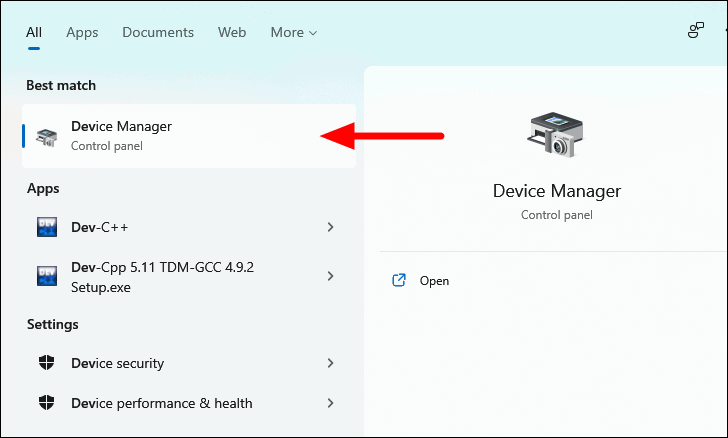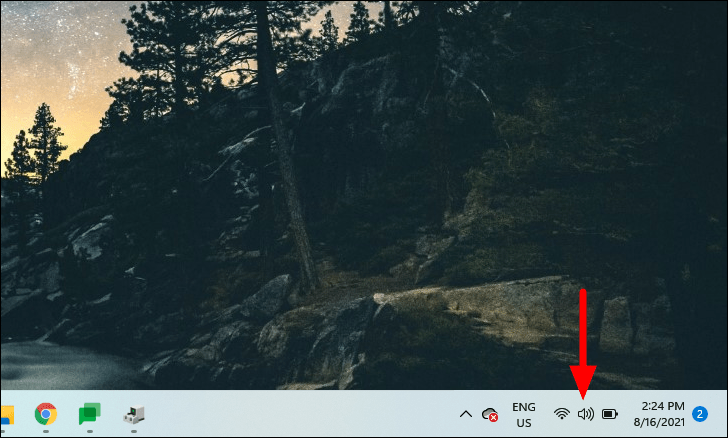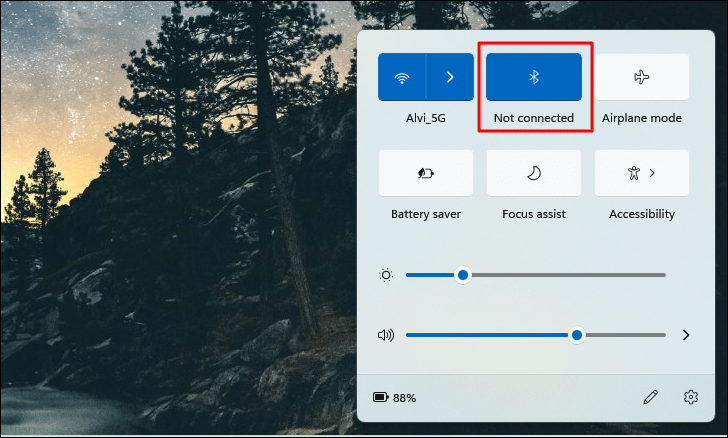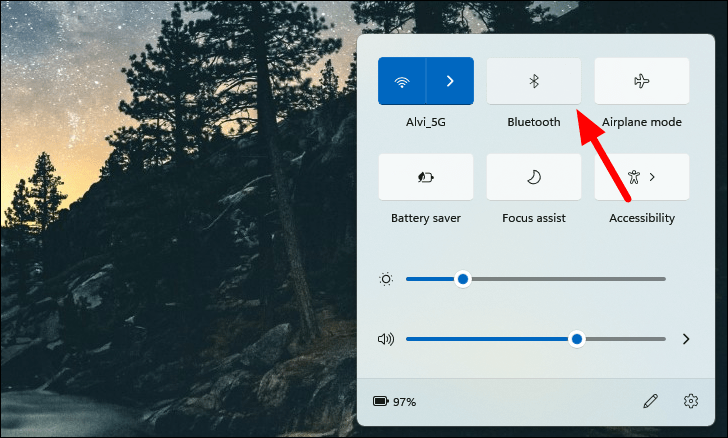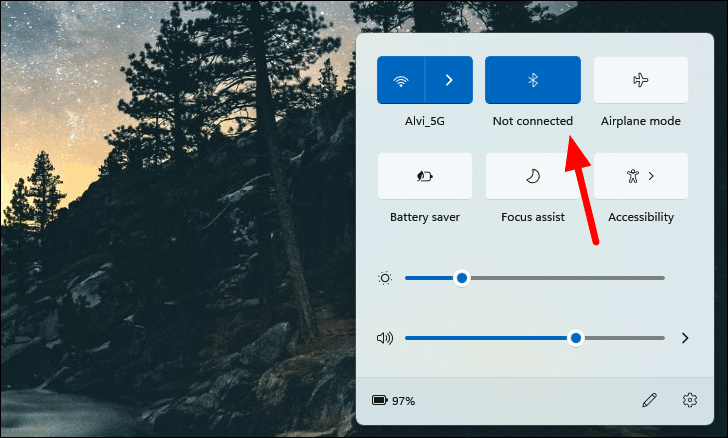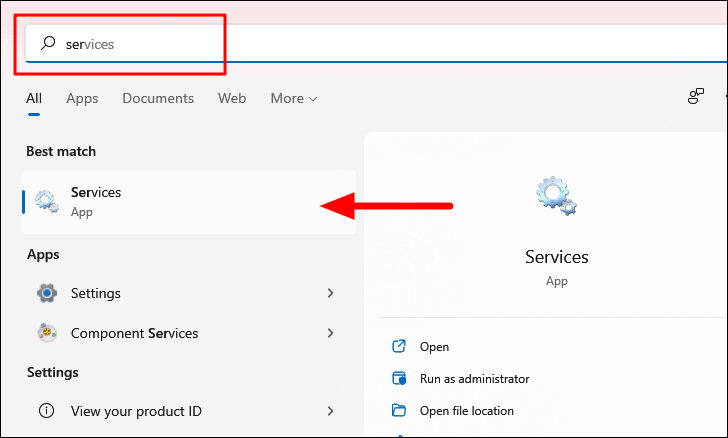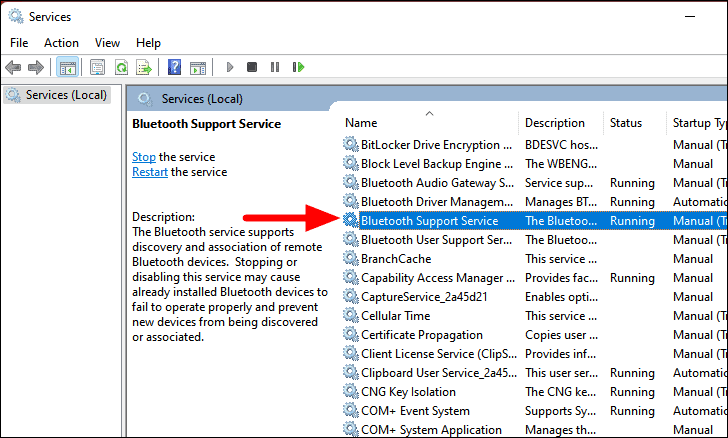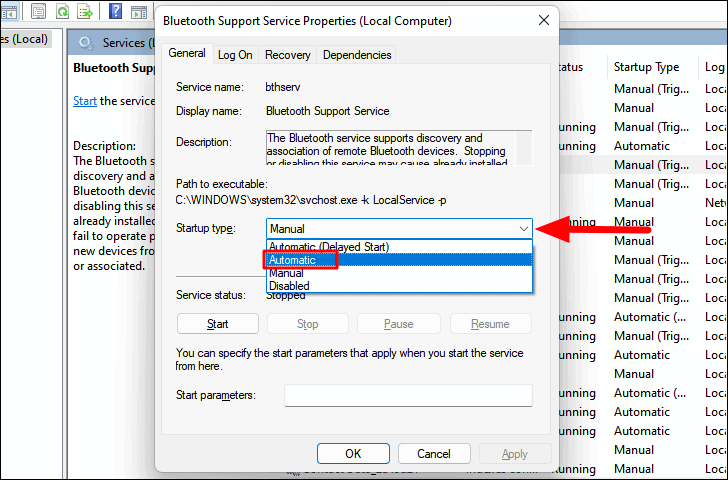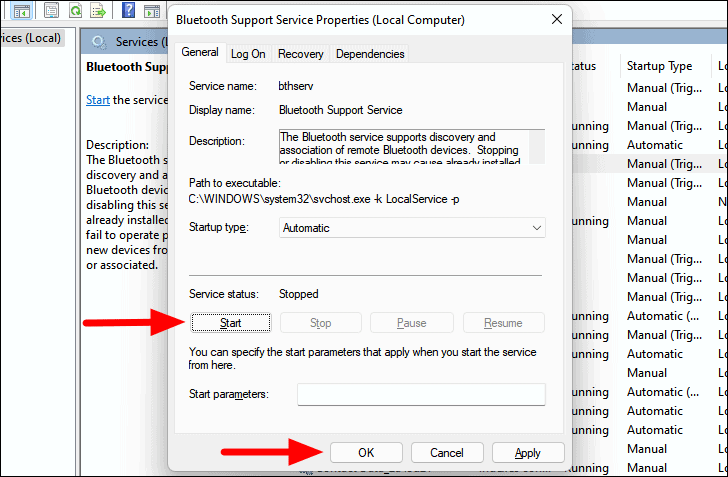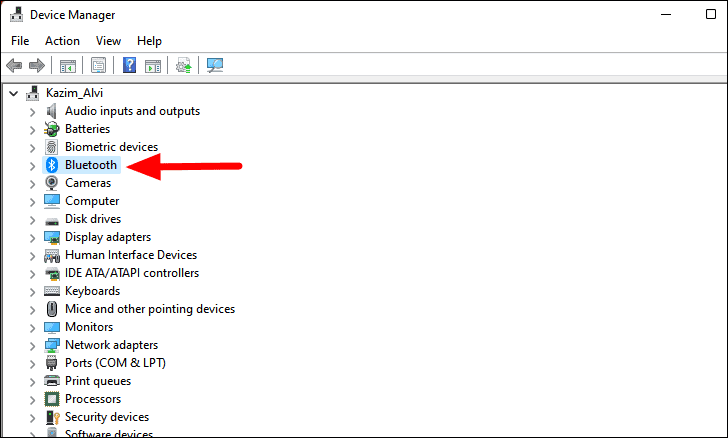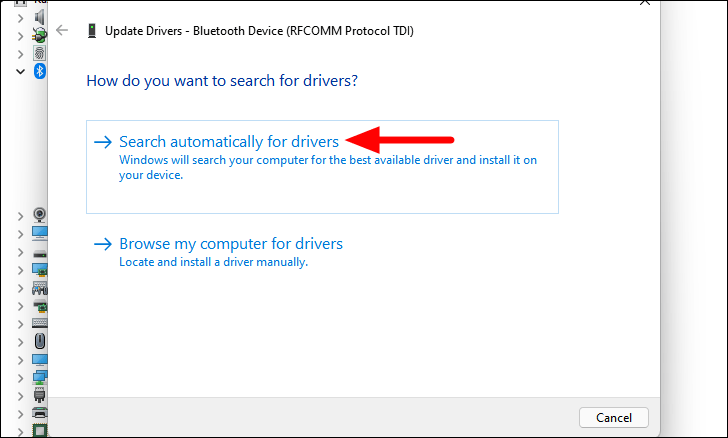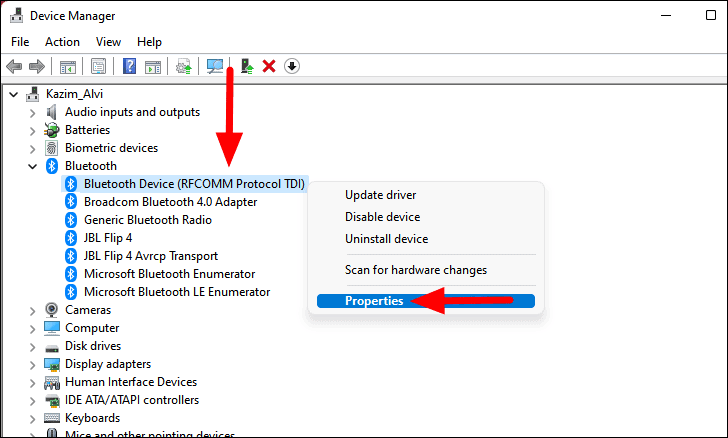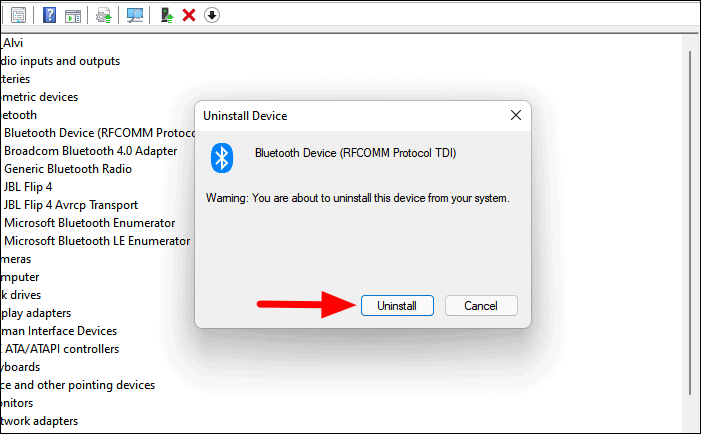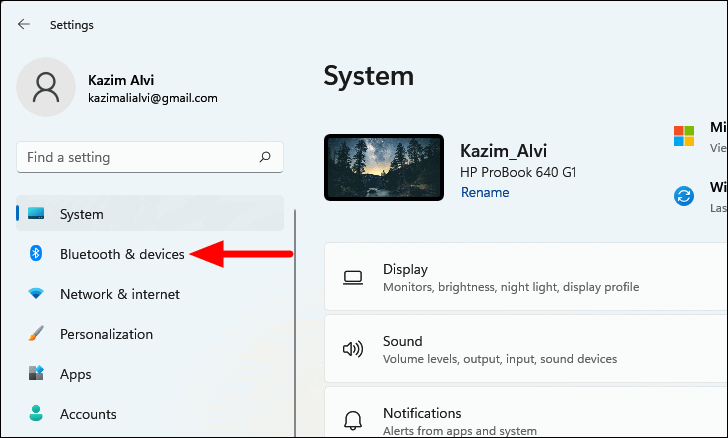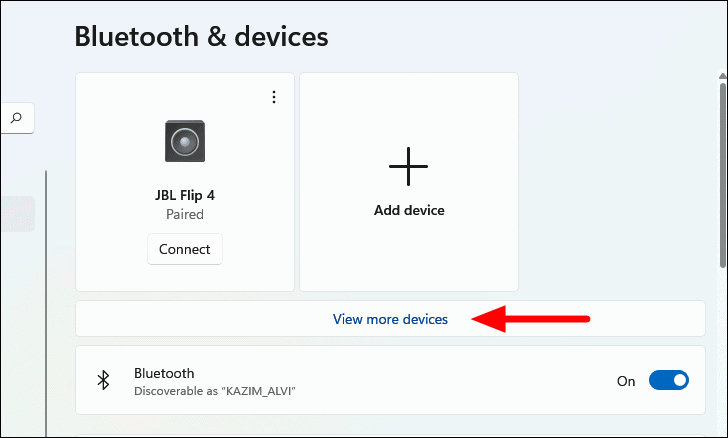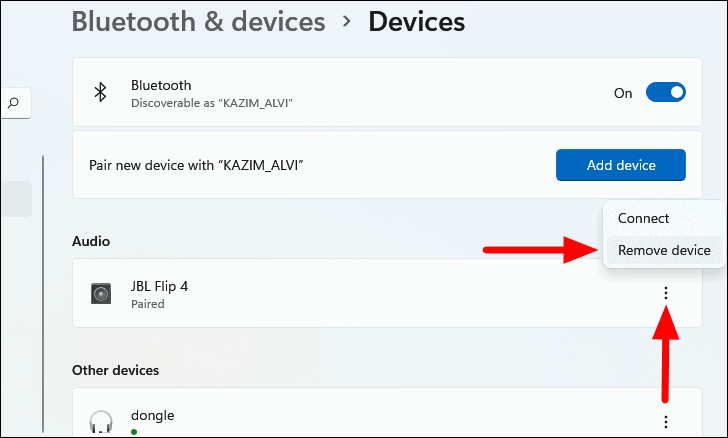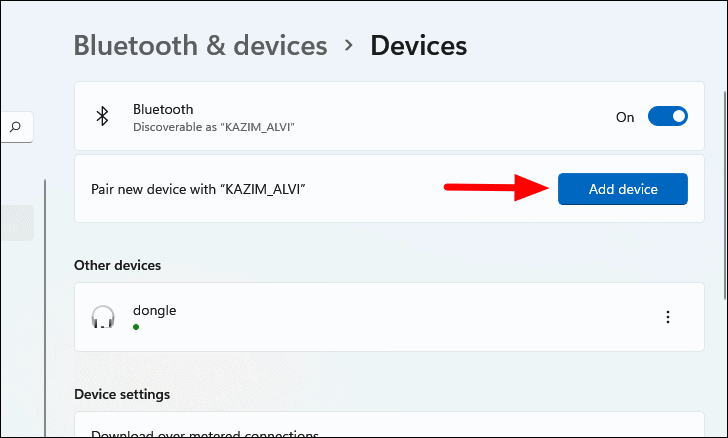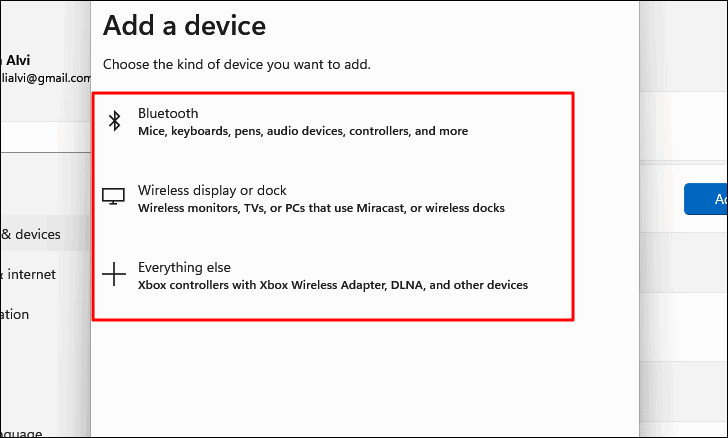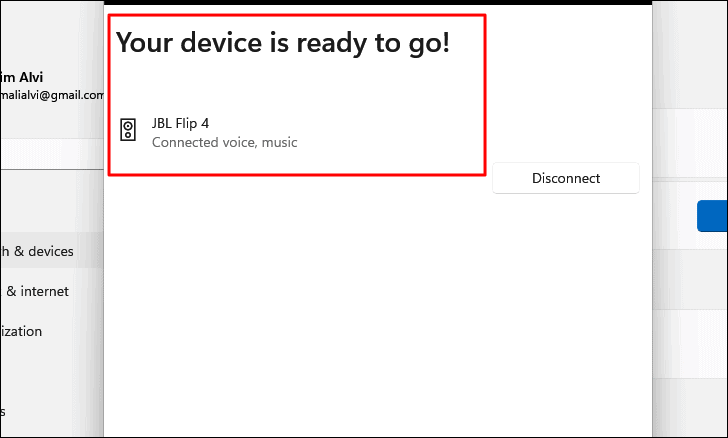- 9 Ways to Fix when Windows 11 Bluetooth is Not Working
- Kazim Ali Alvi
- Why is Bluetooth not Working?
- 1. Check if the PC Supports Bluetooth
- 2. Check if Bluetooth is Turned on
- 3. Re-enable Bluetooth on PC
- 4. Restart the PC and Bluetooth Device
- 5. Run Bluetooth Troubleshooter
- 6. Restart Bluetooth Support Service
- 7. Check if the Bluetooth Device is in Range
- 8. Issues with Bluetooth Driver
- Update Driver
- Reinstall Driver
- 9. Re-pair the Bluetooth Device
9 Ways to Fix when Windows 11 Bluetooth is Not Working
Bluetooth not working on a Windows 11 PC? Here’s a list of the most effective fixes that would get the Bluetooth up and running.
Kazim Ali Alvi
Bluetooth is an integral part of your PC for quick uninterrupted connections. It allows you to connect to various devices including your mobile phone, speakers, microphones, and other devices. With Bluetooth into the picture, gone are the days of messy wired connections.
But, wireless Bluetooth connections are not as reliable as wired ones, and you may occasionally run into trouble. It could either be the inability to turn on Bluetooth itself or issues connecting to another device. Whatever be the case, we have listed some of the most effective fixes to resolve all types of issues that could prevent you from establishing a secure Bluetooth connection.
But before we move to the fixes, let’s first understand the underlying causes that lead to issues with the Bluetooth connectivity.
Why is Bluetooth not Working?
There could be various reasons for the Bluetooth to malfunction. It could be an issue with the software or the hardware. Either be the case, it can most likely be fixed with ease. Here are some of the common issues.
- Malfunctioning driver
- Problems with the bluetooth hardware
- Problems with the device to be connected
- Device is kept far away
- Problem with a specific software
- Either the PC or the device does not support Bluetooth
With a fair understanding of the issues, we can now proceed to the fixes.
1. Check if the PC Supports Bluetooth
You can check if your PC supports Bluetooth both from ‘Network Connections’ and the ‘Device Manager’. We will go with the latter option since it offers a more reliable result.
To check if your system supports Bluetooth, search for ‘Device Manager’ in the ‘Search’ menu, and click on the relevant search result to launch the app.
In Device Manager, locate the ‘Bluetooth’ entry, and click on the downward-facing arrow icon before it to expand and view the devices. If you find the devices listed here, your computer most likely supports Bluetooth.
To confirm the same, check if there’s a ‘Bluetooth’ device listed under ‘Network adapters’. If there’s one, your PC supports Bluetooth and you can move to the other fixes mentioned in the article.
If you don’t find the Bluetooth devices listed in the ‘Device Manager’, your system doesn’t support Bluetooth. In this case, you can either go for an external USB Bluetooth Adapter or a PCI card. Many users with old laptops and PCs often use these to add Bluetooth support.
2. Check if Bluetooth is Turned on
We often go around executing other fixes assuming that the Bluetooth is turned on which is not always the case. Hence, it’s recommended that you first verify if the Bluetooth is indeed enabled on both the PC and the Bluetooth device you are connecting to and is set to ‘Pairing’ mode.
To check if Bluetooth is turned on, click on the ‘Action Center’ icon in the ‘Taskbar’ to view the Quick Settings. Alternatively, you press WINDOWS + A to launch the Action Center.
Now, locate the Bluetooth tile and check if it’s enabled. Enabled options appear blue while the disabled ones appear white. If you find Bluetooth to be turned off, click on the tile to enable it.
Also, some computers come with a physical key to enable Bluetooth. If your computer has one, locate it and verify that it’s enabled. You could check the computer manual to identify the location of the physical key, in case one exists.
3. Re-enable Bluetooth on PC
Re-enabling the Bluetooth can also fix various underlying issues that prevent it from functioning. It’s a simple fix that’s known to resolve several issues.
To re-enable Bluetooth, click on the ‘Action Center’ icon or press WINDOWS + A to launch the ‘Quick Settings’, and click on the ‘Bluetooth’ tile to disable it. As mentioned earlier, once the option is disabled, the tile color will change from ‘Blue’ to ‘White’.
Wait for a minute or so and then again click on the ‘Bluetooth’ tile to enable it.
Now, check if you are able to connect to other devices via Bluetooth.
4. Restart the PC and Bluetooth Device
Many a time, it’s a trivial bug or a program that’s preventing the Bluetooth from functioning. This can be resolved a simply restarting the system. When you restart the system, the OS is reloaded and any trivial bugs are eliminated. After rebooting the system, check if you are able to use Bluetooth.
Also, restarting the device that you are trying to connect with helps fix the issue. Simply turn it off, wait for a minute or two, and then turn it back on. If this doesn’t fix the error, move to the next method.
5. Run Bluetooth Troubleshooter
Windows 11, just like the previous versions, comes with built-in troubleshooters to help fix various trivial and intricate issues. Whenever you encounter an error, it’s best to first run the troubleshooter and let Windows fix the issue, rather than go around meddling with the settings.
To run the Bluetooth troubleshooter, click on the ‘Start’ icon in the Taskbar or press WINDOWS + X to launch the Quick Access menu, and select ‘Settings’. Alternatively, you can press WINDOWS + I to launch the Settings app.
In the System tab of Settings, click on the ‘Troubleshoot’ option at the right.
Next, click on ‘Other troubleshooters’.
Now, locate ‘Bluetooth’ and click on the ‘Run’ option next to it.
Follow the on-screen instructions and choose the relevant options to complete the troubleshooting process.
6. Restart Bluetooth Support Service
If the Bluetooth Support Service is not running, start it, or if it has run into an error, restarting it would fix the issue.
To start/restart the Bluetooth Support Service, press WINDOWS + S to launch the ‘Search’ menu, enter ‘Services’ in the text field at the top, and click on the relevant search result to launch the app.
The services listed here are arranged in alphabetical order. Locate ‘Bluetooth Support Service’ and double-click on it to launch its properties.
Next, click on the ‘Startup type’ drop-down menu and select ‘Automatic’ from the list of options.
After you have changed the ‘Startup type’, click on ‘Start’ under ‘Service status’ to get the service running. Once the service starts, which will usually take a few seconds, click on ‘OK’ at the bottom to apply the changes and close the properties window.
Now, check if you are able to connect to the Bluetooth device.
7. Check if the Bluetooth Device is in Range
Many a time, your PC wouldn’t be able to locate the Bluetooth device if it is out of range. The range varies for different setups and you can verify it from the computer’s manual. To fix the issue, simply bring the Bluetooth device closer to your PC and ensure that there are no obstructions in between.
Obstructions like walls and wooden partitions may sometimes affect the signal strength and lead to issues with the Bluetooth connection. After you have brought the device close to the system, check if you are able to establish a connection between the two.
8. Issues with Bluetooth Driver
If you have an outdated or corrupt Bluetooth driver installed, it could lead to issues while establishing a Bluetooth connection. In this case, you can either update the driver if there’s an update available, or reinstall the driver in case it’s corrupt. Here’s how you can do both.
First, press WINDOWS + S to launch the ‘Search’ menu, enter ‘Device Manager’ in the search box at the top, and click on the relevant search result to launch it.
Next, locate the ‘Bluetooth’ entry and double-click on it to view the devices under it.
Update Driver
Next, right-click on the ‘Bluetooth Device’ option, and select ‘Update driver’ from the context menu.
You will now have two options to choose from, either to let Windows search for the best available driver on the system or to browse and install one manually. It’s recommended that you choose the first option and let Windows take care of the update.
If Windows couldn’t find an update, it’s doesn’t necessarily indicate that one is not available. Many device manufacturers often upload driver updates to their website instead of submitting them to Microsoft, hence Windows couldn’t find one. In this case, you will have to download it from the manufacturer’s official website and manually install it.
But, before we move towards manually downloading and updating the driver, you will first have to identify the current driver version.
To find the current driver version, right-click on the ‘Bluetooth’ device and select ‘Properties’ from the context menu.
In the ‘Properties’ window, navigate to the ‘Driver’ tab and jot down the ‘Driver Version’.
To search for the driver, simply use the ‘Computer Model’, ‘OS’, and ‘Driver Name’ as the keywords. Locate the manufacturer’s official website from the search results, and verify if there’s an update available, based on the driver version you identified earlier. Next, download the driver from the website.
After downloading the update, which will most likely be a ‘.exe’ file, double-click on the downloaded file to launch the installer. Now, follow the on-screen instructions to complete the installation process. If prompted, restart the computer for the changes to come into effect.
Check if updating the driver fixes the issue.
Reinstall Driver
If there’s no update available, it’s likely that you are on the most recent version. In this case, it’s recommended to reinstall the Bluetooth driver. Reinstalling the driver comes in as a handy fix if the driver is corrupt.
To reinstall the ‘Driver’, right-click on the device, and select ‘Uninstall device’ from the context menu.
Now, click on ‘Uninstall’ in the confirmation box that appears to complete the uninstallation process.
Now, all you have to do is restart the system, and Windows will automatically download a fresh driver on PC. Check if this fixes the issue.
9. Re-pair the Bluetooth Device
If none of the above fixes have worked, it’s time you re-pair the Bluetooth device. Many a time, there could be issues while pairing which could, in turn, lead to issues with connectivity. Re-pairing the device will fix it.
First, we will have to remove the Bluetooth device.
To remove a device, launch ‘Settings’ as discussed earlier and navigate to the ‘Bluetooth & devices’ tab on the left.
Next, click on the ‘View more devices’ to find all the paired devices.
Next, locate the device that you are having trouble connecting to, click on the ellipsis next to it, and select ‘Remove device’ from the list of options that appear. Click ‘Yes’ on the confirmation box that appears.
After the device has been removed, the next step is to re-pair.
Note: Before you proceed, make sure that the Bluetooth for the device is turned on and it’s set to ‘Pairing’ mode.
To re-pair the device, click on the ‘Add device’ option at the top.
In the ‘Add a device’ window, choose the ‘Bluetooth’ option.
Next, locate the device that you earlier removed and click on it to connect. For most devices, such as speakers and microphones, a simple click would suffice.
But, when connecting to a phone, you may be required to verify the pin. A pin will appear on the phone will the ‘Pair’ option under it. Verify if the pin on the phone and the PC is the same, tap ‘Pair’ on phone, and click on ‘Connect’ on the PC to connect the two.
The device will now be connected.
Also, you would only have to go through the trouble of pairing just the first time. Next time onwards, the device should automatically be connected when it’s in range.
This would fix the Bluetooth connectivity issue, and a secure Bluetooth connection would be established between the two devices.
With the Bluetooth working after executing the above fixes, you can now establish a connection with the desired device, given that it supports Bluetooth connectivity. Also, it’s recommended that you do not pair a lot of devices as it too could lead to issues with Bluetooth. Hence, remove the devices that you don’t use anymore.
